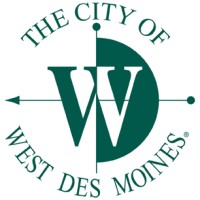A Closer Look: Darren Rebelez
CEO, president, Casey’s General Stores Inc.

Darren Rebelez thought he knew a lot about Casey’s General Stores Inc. when he was selected nearly 14 months ago to be the Ankeny-based retailer’s CEO and president.
He knew Casey’s was a Fortune 500 company founded by Donald Lamberti, who converted a Boone gas station into a convenience store. Rebelez knew that Casey’s had more than 2,200 stores spread across 16 Midwestern states and more than 37,000 employees. He knew the company was known for its pizza, and if a restaurant, would be the fifth-largest pizza chain in the country.
What he didn’t know? The role Casey’s plays in small communities in which its convenience stores are located.
“I probably didn’t fully understand and appreciate the role Casey’s plays in the communities we serve,” said Rebelez, who in June 2019 took the helm of the convenience store chain after the retirement of Terry Handley, who had been CEO and president since 2014.
“Also, I didn’t understand the love and affinity that people have for the Casey’s brand,” Rebelez said. “I’ve never received so many letters or emails from our guests saying how much they appreciate the fact that we have a store in their community and complimenting our team members.”
Rebelez, who previously was president of IHOP Restaurants, said he’s met with Lamberti several times since becoming Casey’s chief executive. Often, those meetings included history lessons about the company, now the fourth-largest convenience store retailer in the U.S.
Lamberti opened the first Casey’s General Store in Boone in 1968. When he saw its success, he opened another and then another, Rebelez said.
“These smaller cities had been underserved for a long, long time,” said Rebelez, a Gulf War veteran who served as an Army Ranger. “As a result of that, when Casey’s came to town, the business performed pretty well. …
“I think we’ve proven to have staying power. A lot of things have changed in rural communities over the years. What hasn’t changed is Casey’s commitment to those communities, and I think people in those communities appreciate that.”
In January, Rebelez and the company’s executive team unveiled a three-year strategic plan to investors that includes adding 350 new convenience stores by 2023, upgrading its customer relationship management programs and expanding its digital footprint.
A few weeks after the plan was unveiled, much of the U.S. economy was shut down because of the outbreak of the novel coronavirus. The pandemic prompted the retailer to accelerate the rollout of some new programs, including curbside service, Rebelez said.
“Curbside delivery was way out on our roadmap because it wasn’t as great of a guest need prior to the pandemic,” he said. “Once it became needed, we moved that to the top of our list and we have a pilot going on now.”
The company had planned later in 2020 to increase the variety of foods that could be ordered online beyond its prepared food. That too was accelerated and customers can now order a larger variety of products online, said Rebelez, who this summer was named the 2020 Retailer Executive of the Year by Convenience Store News’ blue-chip panel of convenience retailing leaders.
At the start of the pandemic, Casey’s was among the first Iowa retailers and national convenience store chains to give full- and part-time store employees an additional $2 per hour.
“I couldn’t have picked a better company to come to,” Rebelez said. “We wrapped up this fiscal year with some great results, and that’s a tribute to our team members.”
We recently chatted with Rebelez on a wide range of topics.
What prompted you to choose your career path?
Early on in your career, you’re still sorting out what it is you want to do long-term. I started my career in the Army. After graduating from West Point, I was in the military for four years.
I ended up in the restaurant business, actually with KFC when they were owned by PepsiCo. I really wasn’t sure exactly what industry I wanted to be in but I knew from my experience in the Army that I liked leading people. [Working at KFC] gave me an opportunity to do that by running a restaurant. And so I evolved from being in the restaurant business to convenience stores … at a time when convenience stores were trying to do more sophisticated food service.
I’ve always enjoyed the industry because it’s really kind of three businesses: It’s the convenience store business, the fuel business and the prepared food business. For Casey’s, in particular, we have a $1.1 billion food business. If we were a restaurant company, we’d be the fifth-largest pizza chain in the U.S. We’d be in the top 50 restaurant chains overall.
What have you learned from your past jobs that you are able to use today at Casey’s?
You learn something everywhere you go. With my time at Exxon Mobil I was certainly able to learn more about the entire fuel supply system in the U.S., everything from the production of fuel to distribution of it and the pricing behind it. Fuel is a big part of [Casey’s] business, so that knowledge has served me well. …
[My experience at IHOP] helped me be able to work with our food team to work on a strategy to elevate our food program to the next level.
Where do you see Casey’s five years from now?
What I have talked about with our team is having a more contemporary version of ourselves and … expanding that footprint and growing this business. The company is very profitable; it’s been very successful. So this business model works. We’ve made some changes more recently with technology. We just launched our rewards program, which has gone extremely well. We launched our e-commerce platform earlier in the year and we’ve added an online assortment. We’ve really digitized our business in a lot of ways.
We laid out a three-year plan for our investors on Investor Day and we outlined some of those capabilities around digital space, around broadening and deepening the product assortment in stores, and really accelerating our store growth. We have a tremendous opportunity in those smaller to midsized communities that are underserved by bringing that great Casey’s experience to the people in those towns.
What do you mean by “a more contemporary version” of Casey’s?
Casey’s is fantastic. I think we can certainly do some more work around innovation on our pizza, but I think we’re in a good spot there. We’ve got a lot of other products that I think we can elevate in terms of the quality, in terms of the variety and the innovation in those products to better meet the needs of our guests.
On the beverage side, we sell coffee, we sell fountain drinks but we don’t sell any espresso-based beverages – that’s the fastest growing part of the coffee category. We have a very limited assortment of frozen beverages, and frozen beverages do really well.
There’s just some things that we haven’t had that are areas of growth that we can elevate our game.
What is Casey’s doing to prepare for electric vehicles?
The electric vehicle trend is a trend that is going to take a long time to really get any meaningful scale. We are partnering with Tesla; we are testing a handful of electric charging stations. We’ll learn from that. … The electric vehicle penetration overall in the U.S. is relatively small and it’s concentrated primarily on the East and West coasts where fuel is far more expensive than it is in the rest of the country and where traffic is much higher and so the environmental concerns are greater. … [The trend on the coasts] will take a while to get to the Midwest. We will continue to monitor and adapt as we need to.
There’s been a lot of discussion in recent weeks about racial equity. What is Casey’s doing to make sure that it is hiring people from minority communities and helping them advance in the company?
We serve all different types of communities, so there’s really no place in our system and in our values to tolerate any sort of discrimination. If you look internally, to your specific question about hiring, we’ve made a concerted effort that if we’re hiring people from the outside, that we have a diverse slate of people as candidates to bring into the company. I’m really proud to say that we’ve made a lot of progress on that front in the last year at the leadership level, in terms of hiring more diverse people. I think we can always be better, but I think we’ve made great strides in the past year.
You said earlier that you’d met with Casey’s founder Donald Lamberti. Talk a little about that.
What really inspired me was just the fact that he had this great entrepreneurial spirit and he wanted to create something special. And he’s done it, and he’s done in a way he thought was best for the company and for the communities.
He created some things that are very difficult to do in our business. When you look at our pizza or food business, as an example, that’s something that is really hard to do for a convenience store. I would argue that if we’re not the best, we’re one of the best in our entire industry at it. I give [Lamberti] all the credit for having that vision to create that concept that has served Casey’s well over the years.
When you’re not working at Casey’s, how do you spend your free time?
I like to spend time with my family. I like to do triathlons when I can. That’s swimming, biking and running. That takes some time and helps me unwind a bit. I also like to barbecue, so being in Iowa has been pretty good for me.
What do you like to barbecue?
Pulled pork and baby back ribs are two of my favorites.
What book has had the greatest impact on you?
There’s a book called “The Servant” by James C. Hunter about servant leadership that I really enjoy. I give that to folks to read because I think it speaks to servant leadership and how to lead through influence and by helping others and meeting their needs in order to be successful. The [book] has had a lot of influence on my leadership style.









